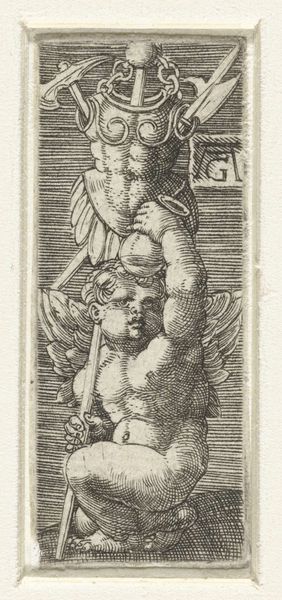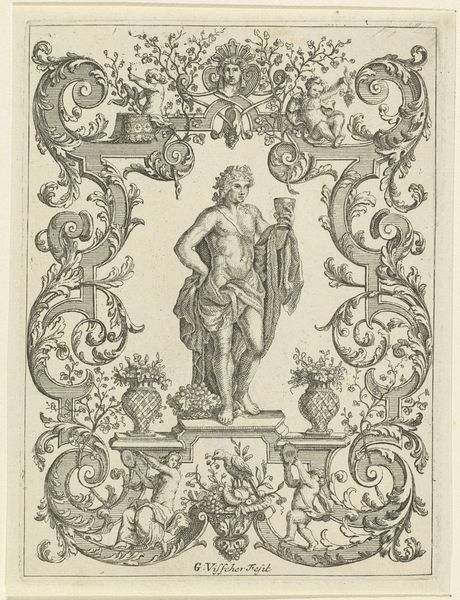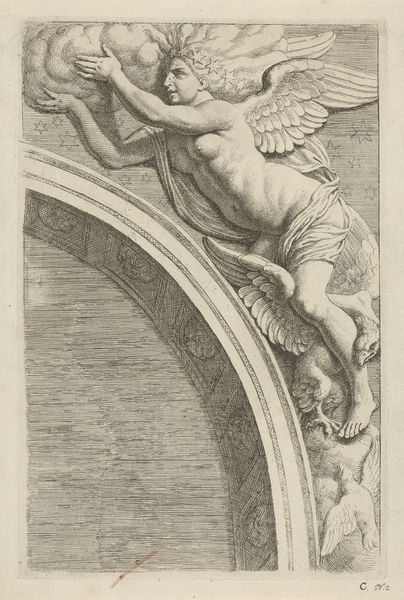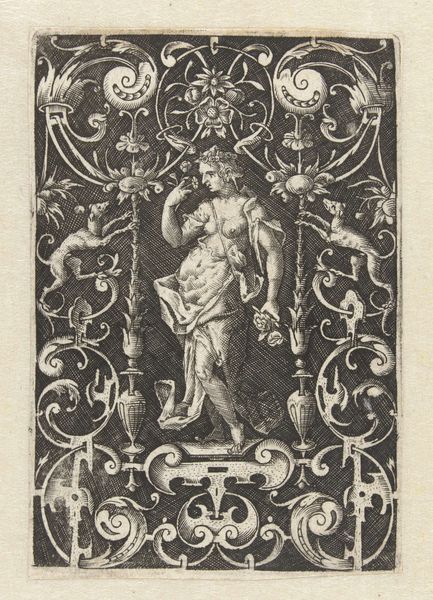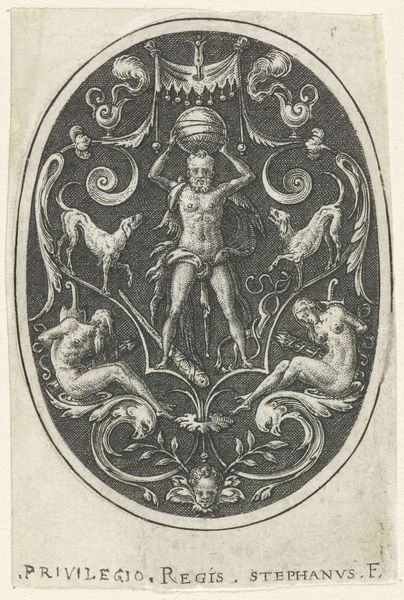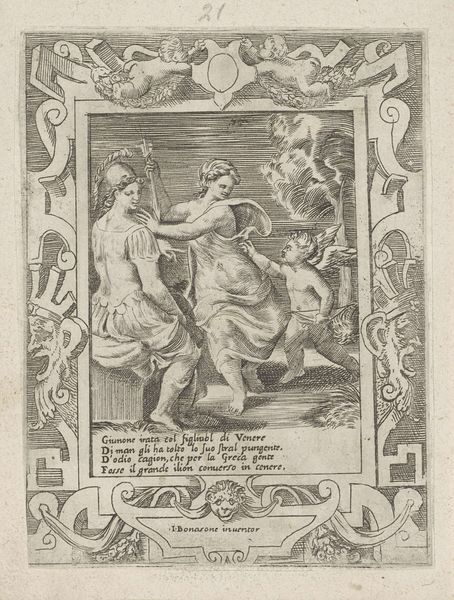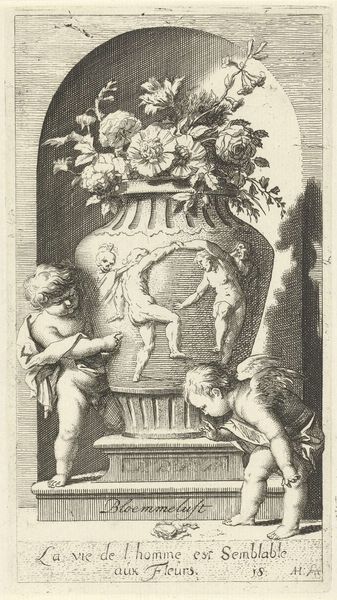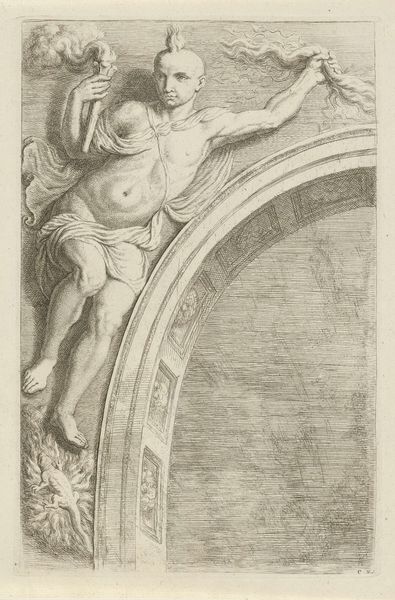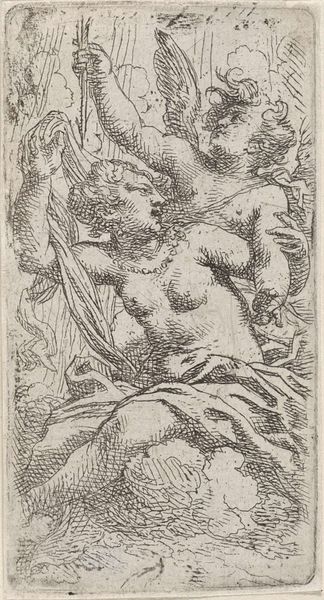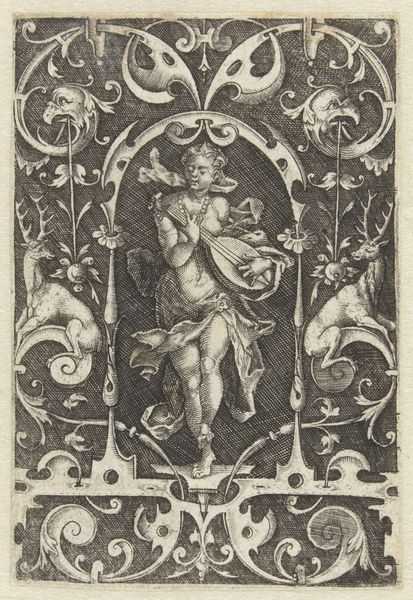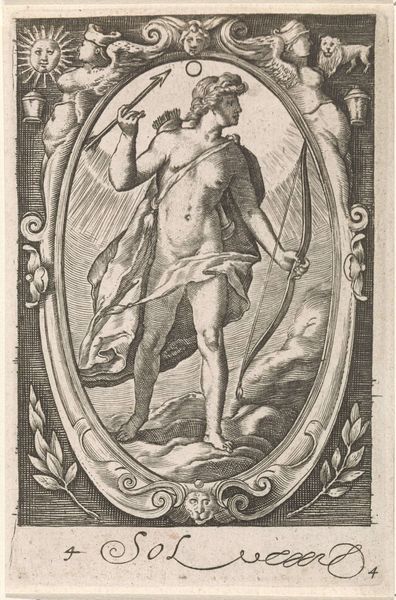
print, engraving
# print
#
mannerism
#
figuration
#
11_renaissance
#
history-painting
#
engraving
Dimensions: height 115 mm, width 42 mm
Copyright: Rijks Museum: Open Domain
This is an engraving from 1548 by an anonymous artist, depicting a man under a canopy pouring out a wine skin. The print shows the figure of Bacchus, the Roman god of wine, sensual pleasure and release from inhibition, which are central to the work’s meaning. Its origin is likely the Netherlands, judging from the design, which is reminiscent of architectural ornament popular at the time. The date suggests that the print was produced during the rise of the Protestant Reformation, when artists and thinkers began to question the established social and religious norms. Was the artist commenting on the role of pleasure in a changing society? To fully understand the print’s message we might look at the history of the Reformation in the Netherlands. We can learn much from religious pamphlets and the publications of the Dutch printing houses. By considering the social and institutional context, we can arrive at a richer understanding of this intriguing work.
Comments
No comments
Be the first to comment and join the conversation on the ultimate creative platform.
